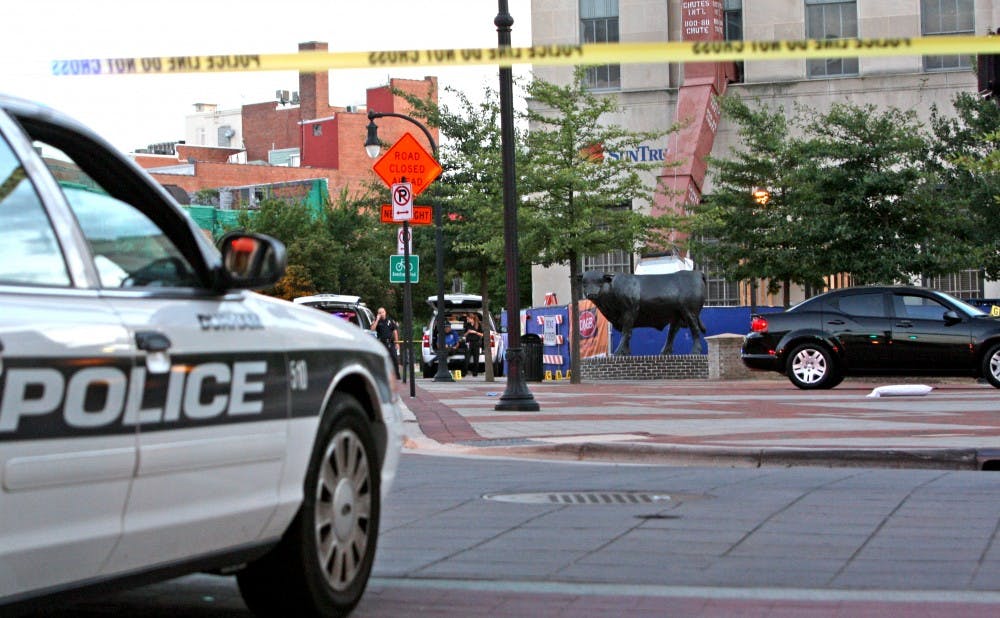The Durham Police Department's initiative Operation Bull's Eye has released statistics exemplifying its overall success in combatting violent crimes in Durham.
Now in its sixth year, the program has yielded several positive rates. A report released last week indicates a 46 percent decrease in violent gun crime, 42 percent drop in drug calls, 53 percent reduction in “sound of shots” calls and 61 percent decline in prostitution. The program, however, has been slowly phased out since its creation in the hopes that the community can sustain improvement on its own.
“We could flood a community with a whole bunch of resources, pack up and leave. Then it goes right back to before and what would we really accomplish?” said Larry Smith, deputy chief of the Durham Police Department. “That’s why the partnership with this has been so important. There’s been economic development there.”
The program was instated in May 2006 after Durham Police noticed that a disproportionate amount of violent gun crimes, validated gang members and shots fired calls in a two-mile area of Eastern Durham. The police force began Operation Bull’s Eye to reduce crime through increased focus on the area, and revealed in its report last week an overall decrease in violent crime by 39 percent in the target area since the program started.
Smith noted that the implementation of the project was not merely an increase in law enforcement presence in the area, but also the establishment of community groups. Some of these groups are chaired by the East Durham Children's Initiative, an independent group that works with Durham police to develop services that meet the needs of children in East Durham. Other groups put police officers in direct contact with the community, such as the Police READS program, where officers read to children.
The programs are intended to break perceived barriers between community members and police officers so that people feel comfortable approaching and talking to police officials.
"We want to foster that relationship between the community and law enforcement and right now some of the stereotypes are some of the barriers," Smith said.
Phyllis Terry, who has worked at JC's Kitchen for 15 years—a restaurant in the area targeted by Operation Bull's Eye—noted that shifting neighborhood dynamics, as well as police involvement, have played a role in decreasing crime in recent years.
Duke Chief of Police John Dailey said the effects of this program stretch far past the targeted district and its residents.
“It can be helpful for everyone when regional communities have targeted crime suppression operations,” Dailey wrote in an email Monday.
Still, the project is not without its challenges. It is difficult to guarantee consistent support and cooperation from law officials, Dailey said, adding that the initiative must aim for a long-term solution in order to be most effective.
Long-term, lasting effects are, in fact, the project's goal, Smith said. In addition to creating community outreach programs, Durham police issue similar programs for the entirety of the city following monthly reports on crime. When district commanders notice a certain area is experiencing higher crime rates than the majority, an increase in police forces will be allotted to that area to alleviate the problem.
Smith cautioned readers, however, to take crime reports with a grain of salt.
"We always publish a report and every year, but we always caution readers and politicians that when you’re looking at crime, you never want to look at from one year to the next," he said. "You want to look at least a five-year trend. You don’t boast a one-year drop just like you don’t go crazy when you have a one-year increase—unless it's huge."
Get The Chronicle straight to your inbox
Signup for our weekly newsletter. Cancel at any time.

